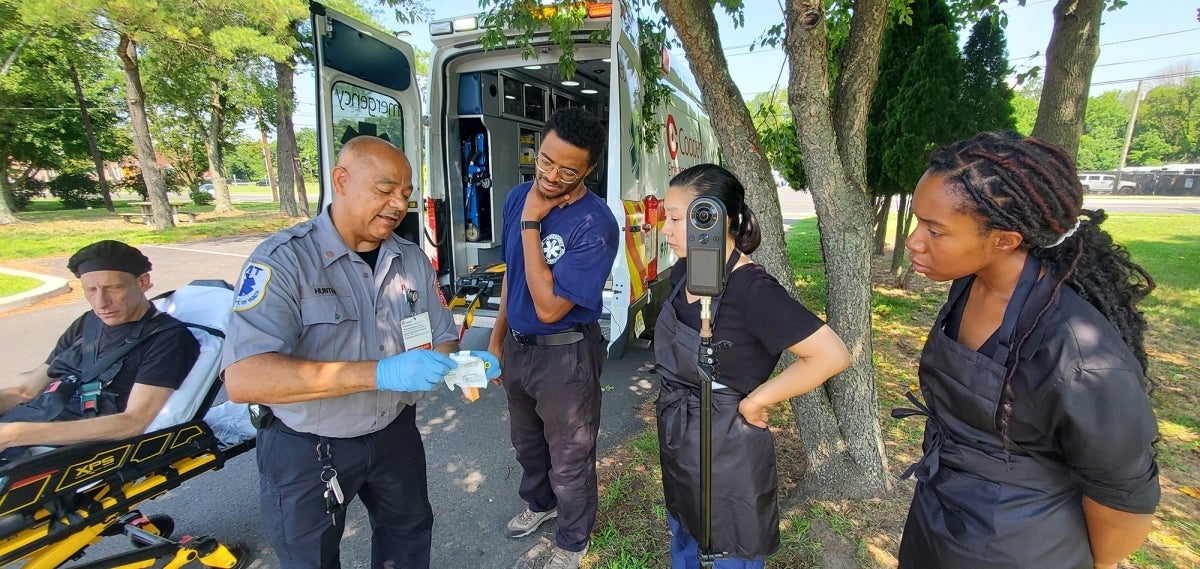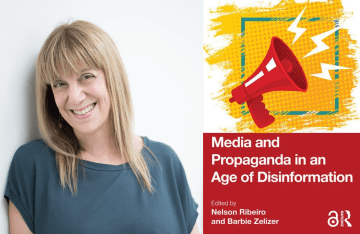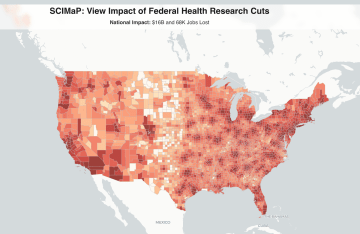Annenberg and Penn Nursing Partner With Camden County To Launch Virtual Reality Narcan Training
In conjunction with the School of Nursing, the Annenberg Virtual Reality ColLABorative continues efforts to train as many people as possible on administering the lifesaving overdose reversal medication.
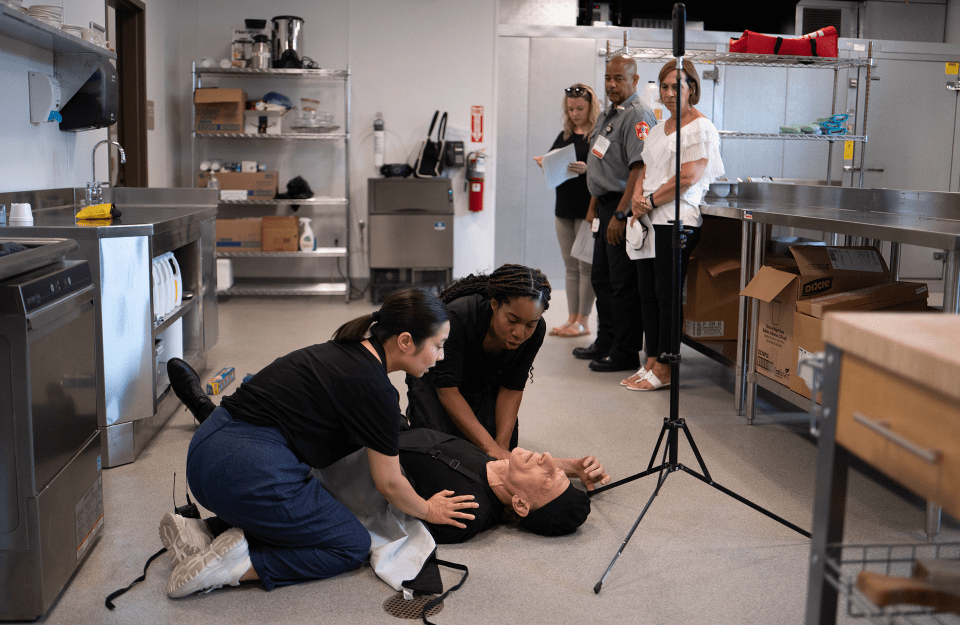
In a virtual reality Narcan training video created for Camden County by a team from the School of Nursing and Annenberg Virtual Reality ColLABorative, actors Bi Jean Ngo and Britt Fauzer, left and right, portray people helping administer Narcan to a chef portrayed by David Blatt, center.
Last year, 354 people died from opioid overdoses in Camden County, according to the New Jersey Office of the Attorney General, which in 2022 recorded an estimated 15,407 administrations statewide of naloxone, also known by the brand name Narcan. This year, New Jersey launched an initiative allowing anyone 14 and older to anonymously obtain naloxone for free at more than 600 participating pharmacies across the state. Camden County, just across the Delaware River from Philadelphia, has also installed secure NaloxBoxes in every public school.
Despite this increased availability, many people still don’t know when or how to administer the nasal spray that can rapidly reverse an opioid overdose, or that it’s harmless even when someone isn’t overdosing.
The Camden County Office of the Prosecutor enlisted Penn’s School of Nursing and Annenberg School for Communication’s Virtual Reality ColLABorative to create a locally tailored training video on Narcan administration, using virtual reality to create an immersive viewing experience. County officials recently announced the launch of the nine-minute video, which is supported by funding from the 2022 Overdose Data to Action (OD2A) Operation Helping Hand grant, administered by the New Jersey Office of the Attorney General.
“This is a wonderful opportunity for Camden County to get as many people trained as possible, to reach as many people as we can,” prosecutor Grace C. MacAulay says, adding that without the help from Penn, “we would not be able to effectuate this training rollout this efficiently, this quickly, and this well.” She says the video lays out Narcan administration in simple terms and provides the reassurance, “It can’t hurt you; it can only help, and even if it turns out someone did not need it, there’s no harm, nor liability.”
John Pellicane, director of the Camden County Office of Mental Health and Addiction, says that training decreases stigma while increasing education and acceptance of harm reduction. He says the county has NaloxBoxes in public libraries, health facilities, schools, courts, bars, motels, parks, and other settings where someone might be able to respond to an overdose. The county has Overdose Emergency Kits on some school buses and has so far trained 275 school bus drivers to respond to an overdose.
From Penn Nursing to Philadelphia to Camden County
The Camden County-Penn partnership stemmed from a prior training video co-created by Kyle Cassidy, a technologist at Annenberg, and is the third in a series of VR Narcan training collaborations with Penn Nursing, following trainings of nursing students in 2018 and laypeople in Philadelphia in 2020.
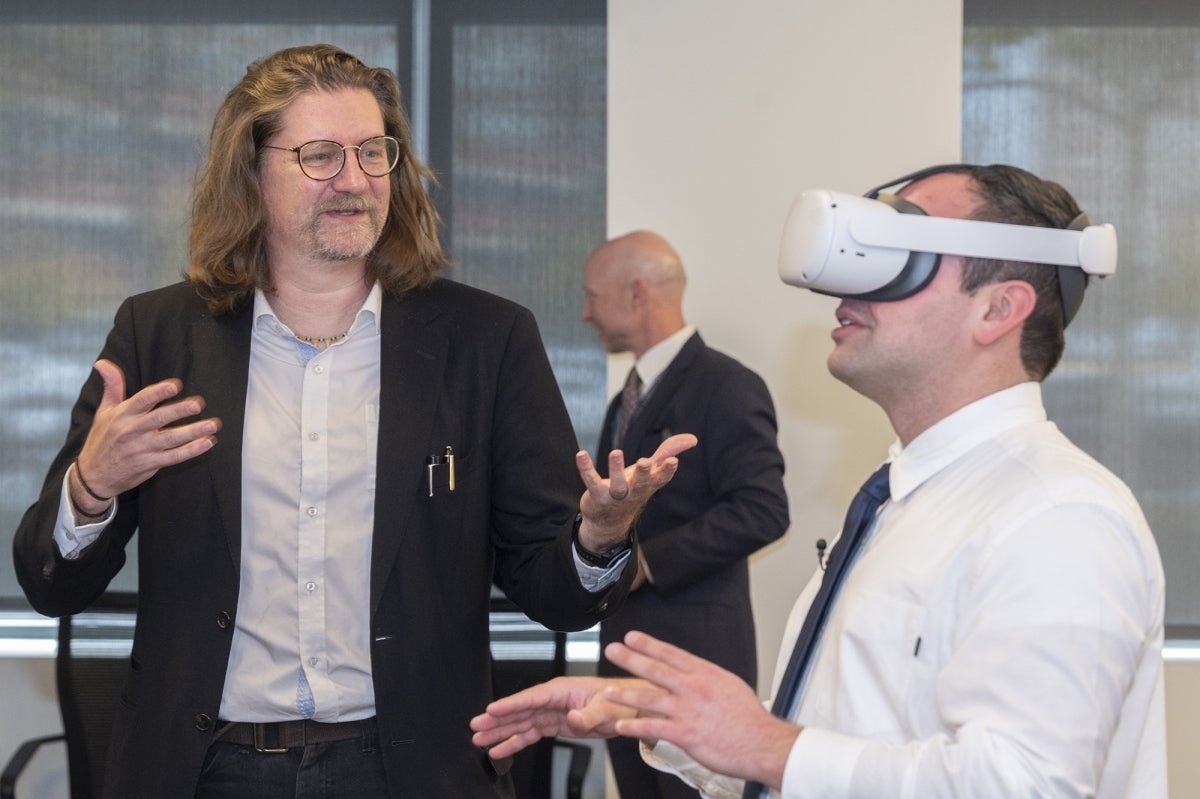
Cassidy co-founded the Annenberg Virtual Reality ColLABorative in 2022 with research associate Katerina Girginova, who received her Ph.D. from Annenberg in 2018. Cassidy had long been interested in virtual reality and with David Toccafondi, manager of Penn Libraries’ Vitale Digital Media Lab, also co-founded the Penn Working Group on Virtual Reality. Through that, Cassidy met Ann Marie Hoyt-Brennan, director of the School of Nursing’s Helene Fuld Pavilion for Innovative Learning and Simulation. Penn Nursing had recently incorporated Narcan training into its curriculum, but Hoyt-Brennan wanted something more accessible to the broader community than an hourlong, in-person training.
Cassidy suggested VR as an alternative approach. Since it is time-consuming to bring in people for regular trainings, Hoyt-Brennan says she saw VR as the solution to get as many people trained as possible.
Funded by the Rita and Alex Hillman Foundation, they conducted a pilot study in Hoyt-Brennan’s Nursing in the Community course in 2018, in which some students received standard simulation training Hoyt-Brennan created while others used a VR experience Cassidy adapted from it. Before-and-after questionnaires showed that VR students performed just as well, and researchers—led by former Penn Nursing lecturer Nicholas Giordano—published their findings in Nurse Education Today.
In 2019 and early 2020, Natalie Herbert, a then-doctoral candidate at Annenberg, led a team that tested VR training against in-person instruction at naloxone giveaways and training clinics the Philadelphia Department of Health held at local libraries. The researchers found the VR training was just as effective in educating people, publishing their findings in the journal Drug and Alcohol Dependence in 2020.
“Rarely do we get to see such an immediate lifesaving benefit to our research,” says Sarah Banet-Weiser, dean of the Annenberg School. “We are all so thrilled and proud that Kyle’s innovative use of virtual reality can be used to efficiently and effectively train anyone to revive people who are overdosing.”
“What we think about here at Penn is not just what we can do in isolation but the impact we can have on our communities,” says Antonia M. Villarruel, dean of the School of Nursing.
Robert Ferris, chief of detectives in the Camden County Prosecutor’s Office, says he saw the video online and spoke with Hoyt-Brennan about partnering on a video tailored to Camden County.
“Pharmacies are giving free Narcan out, but nobody knows how to identify when to use it or how to use it,” Ferris says. “I think [the video is] going to connect with our youth, because of the technology and the way you watch it with the VR glasses.”
Lifesaving techniques in a nine-minute video
The scripted video with hired actors takes place in the kitchen of a county building. One person asks another, “Do you think that Jesse’s OK? He looks really out of it.” Jesse, the chef they’re talking about, faints. While calling 911, they comment that he’s barely breathing, and has pale skin, blue lips, and a slow pulse.
Every Camden County building has Narcan, and so the actors smash the NaloxBox and administer Narcan to Jesse by putting the device in one nostril and pressing the plunger, explaining that they can give a second dose in five minutes if he hasn’t responded. Jesse regains consciousness, the people helping put him in the recovery position, and then emergency medical technicians arrive.
Anyone can watch the video online. Watching it with a cell phone inserted into a Google Cardboard viewer available for under $10—or any virtual reality headset—provides an immersive and transporting experience. Those watching it without a device can drag the cursor across the video to get a 360-degree view.

“Through virtual reality, we can provide lifesaving training to thousands through something as simple as a nine-minute video, which has proven as effective as any formal classroom training,” MacAulay said at a press conference last week.
Katerina Girginova, co-director of the Annenberg Virtual Reality ColLABorative, says she also hopes this mode of delivery will appeal to younger audiences. She adds that VR training combines different learning styles—such as visual, aural, and kinesthetic—“which potentially makes for an impactful learning experience.” Cassidy notes VR isn’t a new technology but “a bunch of old technologies used in new ways,” explaining that making a video involves merging several fish-eye lenses and attaching them to an accelerometer.
Annenberg doctoral students Kate Okker-Edging and Nya Mbock and undergraduate student Oscar Vazquez, a communications major from Chicago, helped write the script for the Camden County video.

“In my writing and editing, I tried to put compassion into the dialogue,” Okker-Edging says. “We know that compassion is such an important part of stigma reduction toward people who use substances. I think this is a strength of the script. The bystanders are non-judgmental in the scene, and they approach helping Jesse with care.”
At last week’s press conference, Camden County Commissioner Director Louis J. Cappelli said the video “will be used as a fast and easy alternative” to support Naloxone training for students and staff, bus drivers, and others who carry the lifesaving pharmaceutical.
“Narcan is a critical tool in our battle against the opioid and overdose epidemic,” Cappelli said. “It is imperative that as many people as possible are trained in how to administer this lifesaving medication and this instructional video will help us do that. I want to thank all of the entities that partnered together on this venture, and I am extremely proud that Camden County is continuing to lead the way when it comes to defeating the opioid epidemic.”
